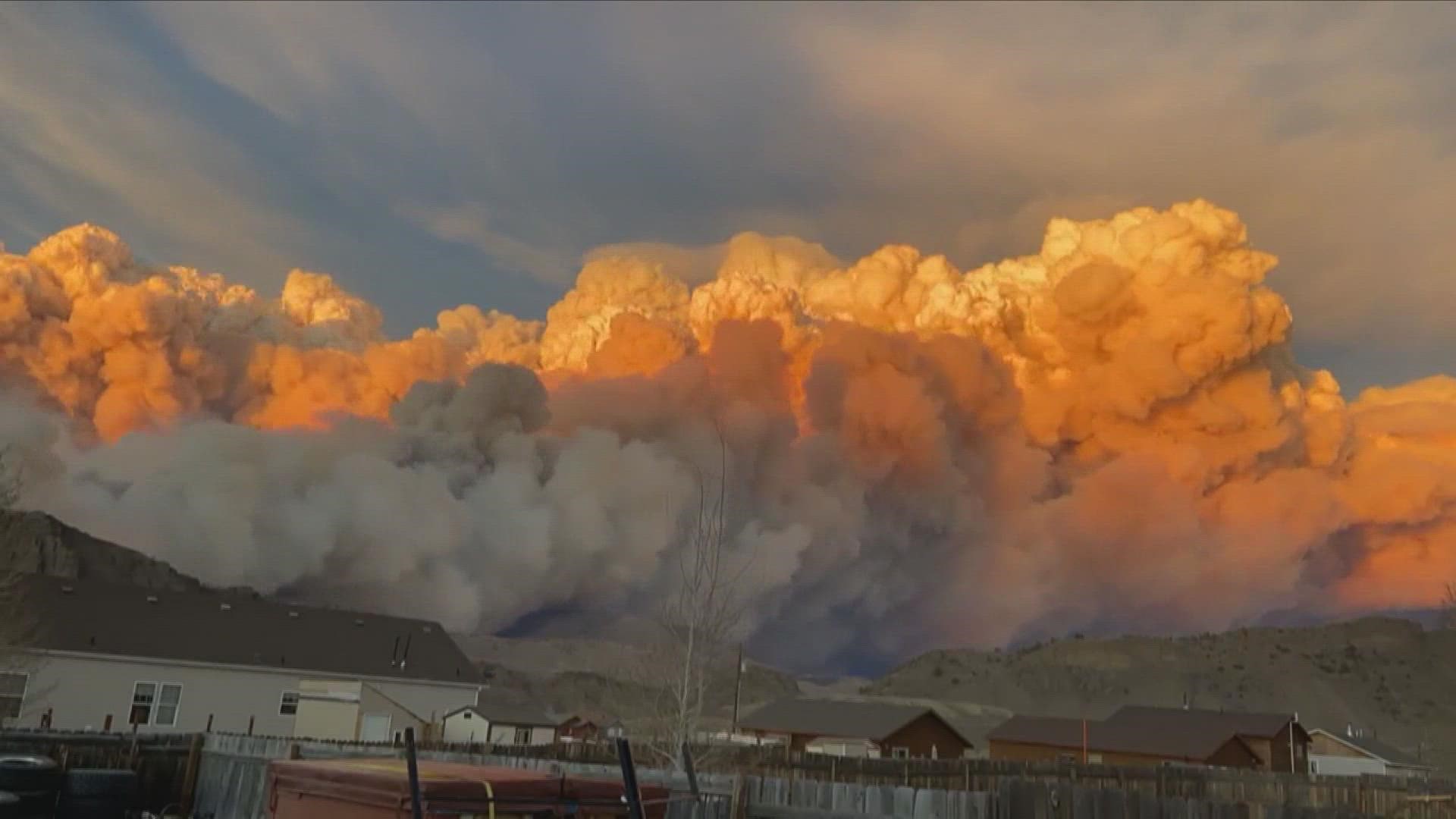BOULDER, Colo. — Scientists say wildfire smoke from the west coast is creating new health problems in Colorado.
Scientists at the National Center for Atmospheric Science (NCAR), in Boulder, used the historical carbon monoxide record to measure the impact wildfire smoke has had on air pollution over the last several years.
Atmospheric chemist Rebecca Buchholz said there has been a steady and seasonal pattern to carbon monoxide in the satellite era. The levels starts to rise in the early winter, hit a peak in April, and then start to tail off towards the summer.
“So around August we usually see a dip in carbon monoxide," Buchholz said. "But what’s happening now, is that we area seeing a secondary peak of carbon monoxide in August.
She said that August peak never existed in the satellite data before 2012.
And when she compared that new peak in pollution with wildfire data, she was astonished find an exact match to timing of wildfire activity in the Pacific Northwest since 2012.
She said it’s a concerning new pollution pattern, not just because of increased particle and ozone pollution, but the Front Range has had an aggressive policy targeting carbon monoxide emissions over the last 20 years.
“And we’ve seen carbon monoxide generally decrease because of that in the atmosphere, but these fires have been counteracting those gains that we’ve been making as humans with improving our pollution control”
Wildfire smoke is host to several harmful pollutants like fine particles, ground-level ozone, and carbon monoxide. But those pollutants are also created by things like industry and motor vehicle emissions.
So, it’s challenging for scientists to separate the impacts of just the wildfire smoke alone, especially when the smoke gets several hundred miles downwind of the fire.
“We can use carbon monoxide to track where that smoke pollution is going because it’s really easy to measure from space,” Buchholz said.
Health Impacts
Buchholz said was not heavily focused on the health risks of wildfire smoke but she and her team felt it was important to include some relevant data in their article.
They used an NCAR-based computer model, the Community Atmosphere Model with a chemistry component, to simulate the movement of emissions from the Pacific Northwest fires and their impact on carbon monoxide, ozone and fine particulate matter.
The results showed the pollutants could affect more than 130 million people, including about 34 million in the Pacific Northwest, 23 million in the Central U.S., and 72 million in the Northeast.
They also looked at respiratory death rates in Colorado for the month of August from 2002 to 2011, compared with the same month in 2012 to 2018. They chose Colorado, located in the central U.S. region of the study, because respiratory death rates in the state were readily obtainable.
They found that Colorado respiratory deaths in August increased significantly during the 2012-2018 period, when fires in the Pacific Northwest — but not in Colorado — produced more emissions in August.
“The noticeable increase in respiratory deaths in Colorado during the month of August is concerning," said Buchholz. "It shows that more research in needed, focused on the health impacts of regions near wildfires and areas well downwind of wildfires."
SUGGESTED VIDEOS: Science & Weather

